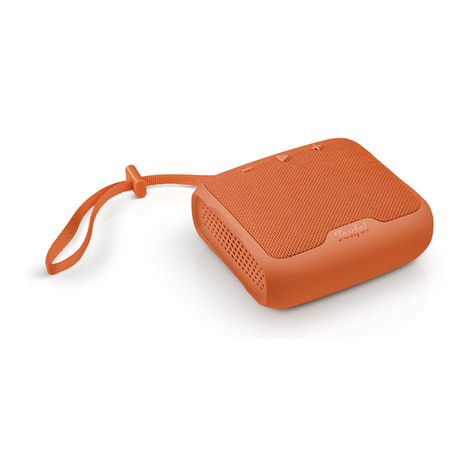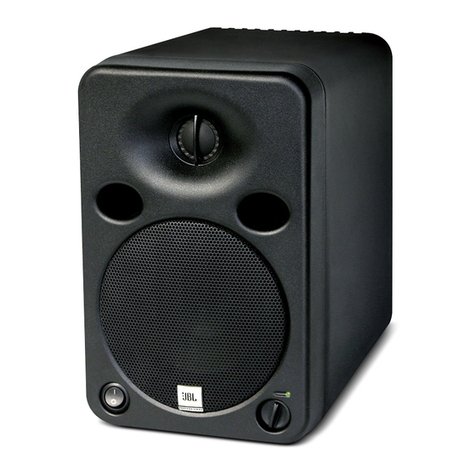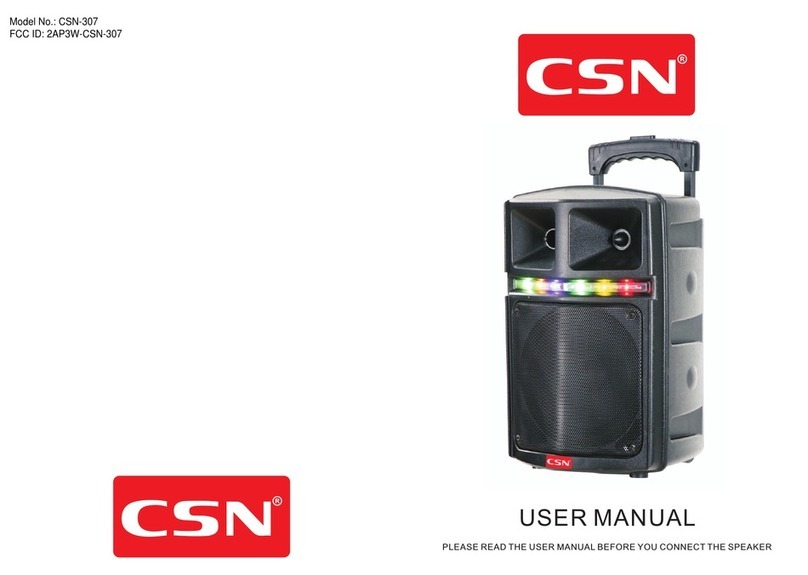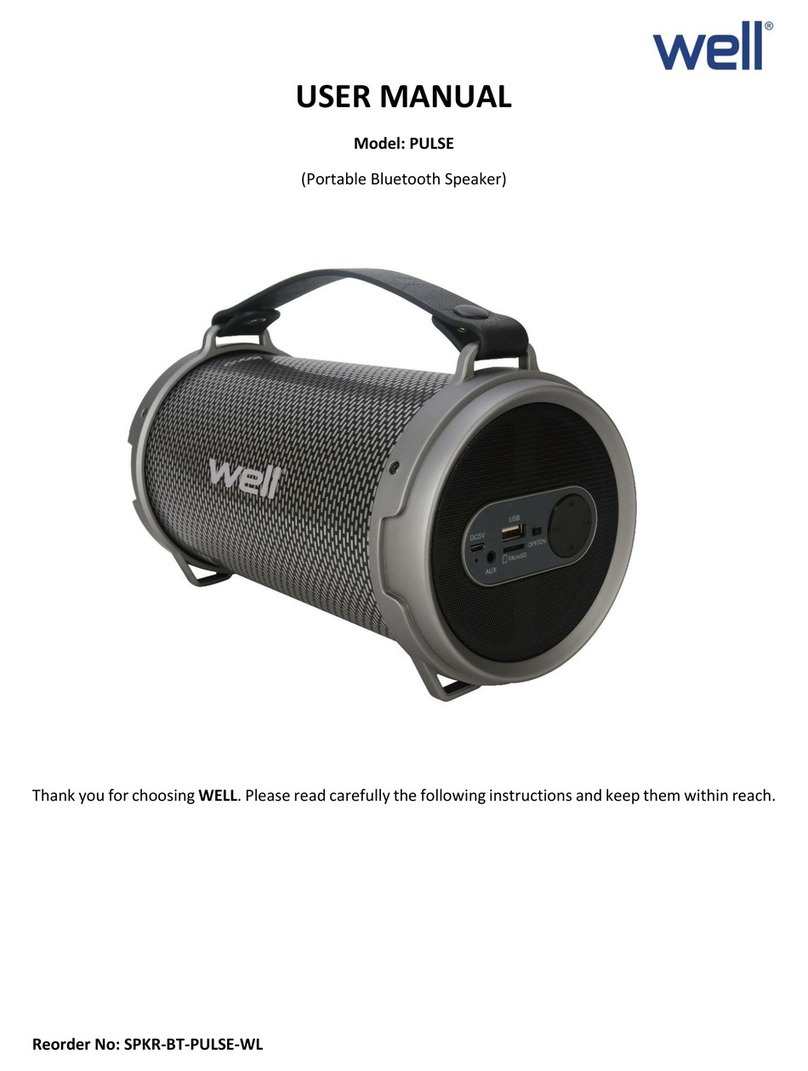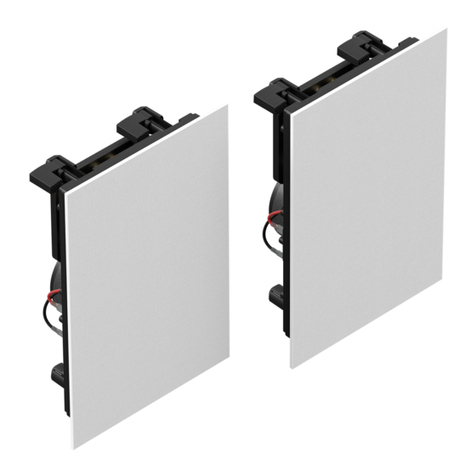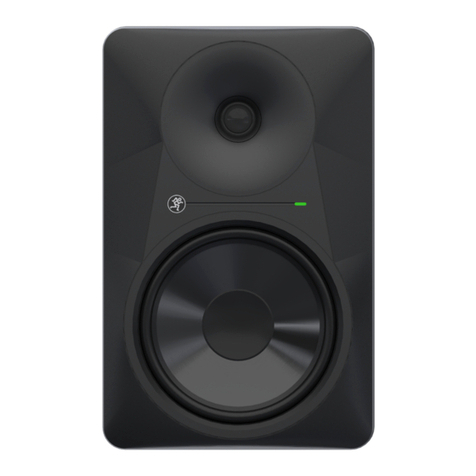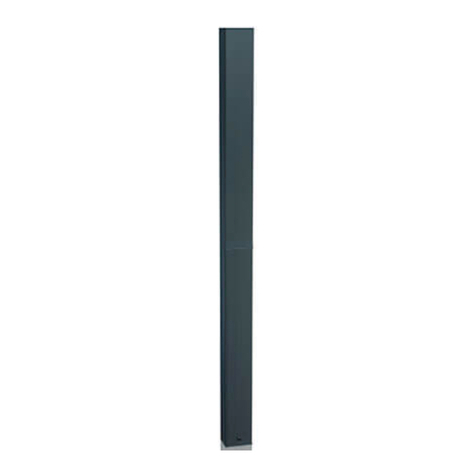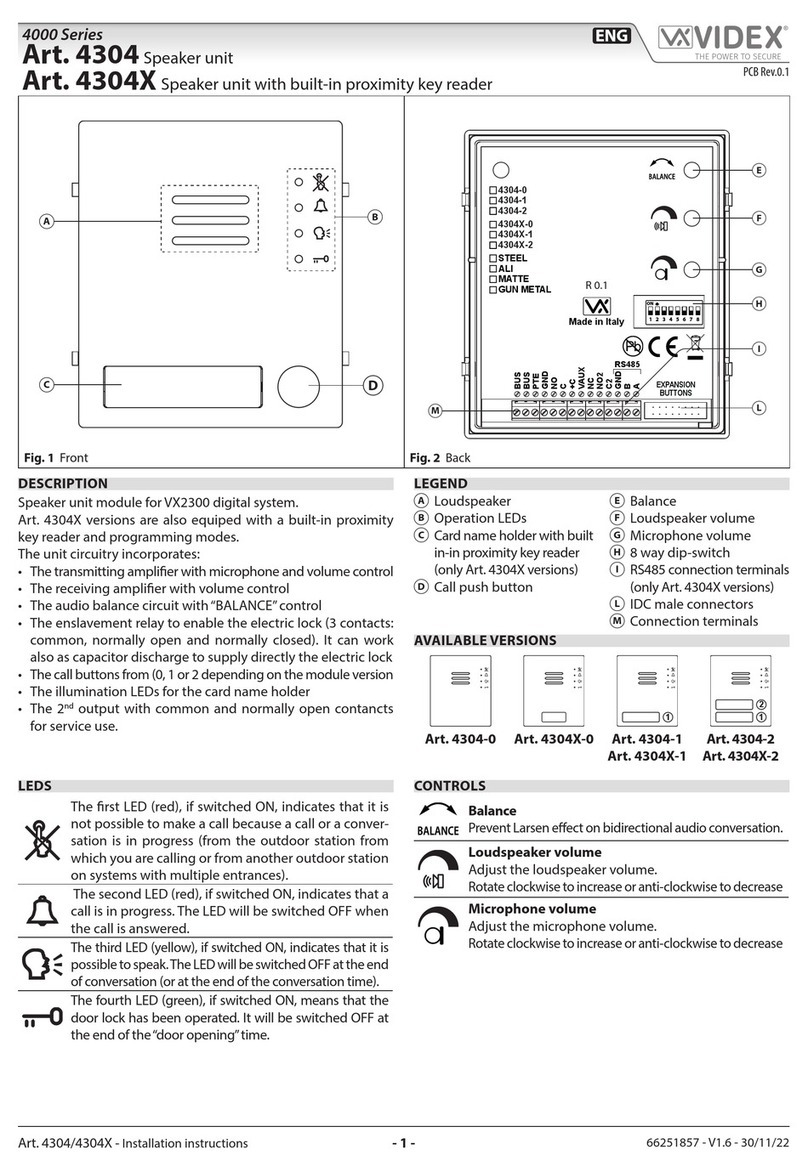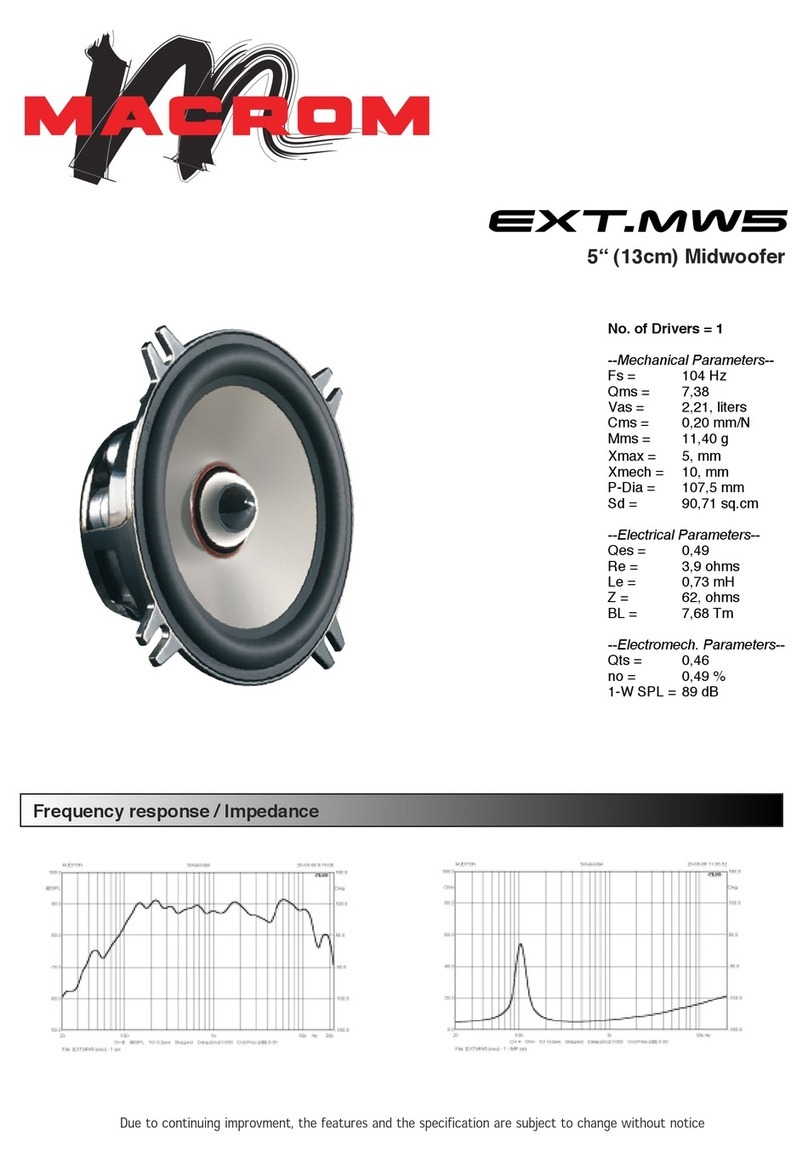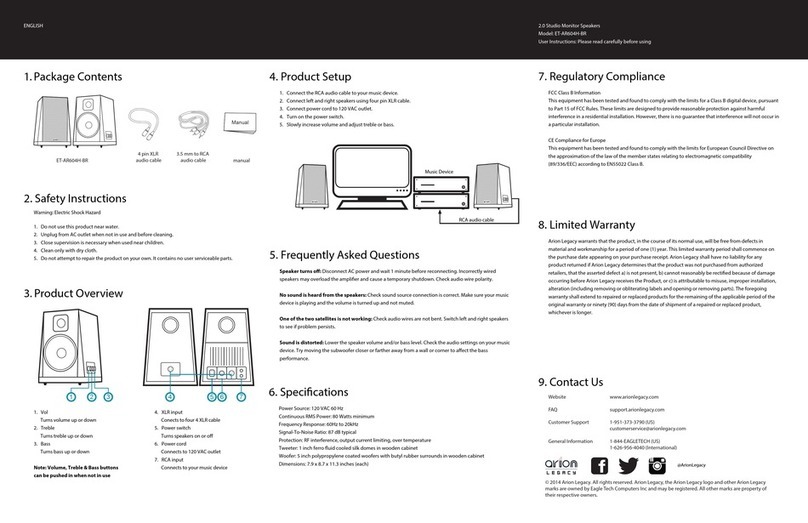GO Audio SA-6 User manual

INSTALLATION MANUAL FOR GO Audio SA-6 and SA-12 LINE ARRAY LOUDSPEAKERS
PLEASE CAREFULLY READ THESE INSTRUCTIONS BEFORE INSTALLING YOUR PRODUCT
1. Safety Precautions
•Please follow all instructions in this manual.
•Important: The SA-6 and SA-12 are NOT intended for overhead use. Overhead use may result in injury or death. If you need
to mount your line array speakers above occupied areas, please contact GO Audio and we can build you a version that will
be suitable for your needs.
•The SA-6 and SA-12 must be attached to a wall or other secure surface. They must not be left freestanding, as this may
result in injury, death or damage to the loudspeaker or other equipment.
•Please use a mount that is rated for the intended load: 40 lb rating for SA-6 and 80 lb rating for SA-12.
•The SA-6 and SA-12 are not intended for use in damp or wet environments. Installing these loudpeakers in damp or wet
environments will void the warranty and may cause a dangerous situation.
2. Loudspeaker Placement and Aiming
•Proper aiming requires that you understand the directional characteristics of these loudspeakers.
•The SA-6 and SA-12 have a very wide horizontal coverage pattern and a very narrow vertical coverage pattern. It is
therefore much more important that you get the vertical aiming right. In general, the top of the loudspeaker should be
located just above people’s heads. Coverage can be visualized as a large half cylinder whose center is located down the
center of the front of the loudspeaker.
•In rooms where there is a significant echo off the rear wall, a slight downward tilt will help reduce unwanted echoes. Try to
direct as much of the sound energy as possible onto the audience.
•These are "line-of-sight" devices. If you can see them, you'll be ab le to hear them. Try to avoid physical obstructions
between the loudspeaker and the audience, as this will cause undesirable shadowing.
•The SA-6 is a moderate-throw device meaning that you should not expect it to cover more than about 30 or 40 feet into a
room. The SA-12, on the other hand has surprisingly long throw and can easily project 75 to 100 feet. Penetration into a
room will be limited by background noise, gain before feedback and physical obstructions.

3. Mounting Options
•The SA-6 and SA-12 are provided with four 1/4-20-threaded mounting holes that accept a standard 200mm VESA mount.
Please observe the manufacturer's rating on the mount. A 40 lb rating is required for the SA-6. An 80 lb rating is required
for the SA-12.
•Follow the instructions that come with the VESA Mount. Generally speaking, you will begin by separating the mount into
two pieces. The front portion will attach to the loudspeaker and the rear portion to the wall. Please make certain that the
wall you mount it to is capable of supporting the load. We recommend that you use an attachment method rated at least
double the combined load of the speaker and mount.
•The SA-6 and SA-12 are intended to be wall-mounted with minimal downward tilt.
•In most cases the SA-6 and SA-12 should be mounted so that the top of the enclosure is about 6 feet off the floor. Actual
mounting height will vary according to room conditions. Please observe safety precautions, above.
4. Connection Options
•The SA-6 and SA-12 are connected using the five-way binding posts on the rear. For easy connection and disconnection, use
a connector such as the Pomona Electronics MDP stackable double banana plug.
•The impedance of the SA-6 is 13Ω. The impedance of the SA-12 6.5Ω Because of the way that they are wired, both models
can be connected to an amplifier of the same power rating. What’s important is the minimum impedance that the amplifier
is capable of driving. A 2Ω-capable amplifier rated at 450-600 Watts into 4Ω can drive up to two SA-12s or four SA-6s per
channel. A 4Ω-capable amplifier of the same power rating can drive one SA-12 or two SA-6s. For quiet environments where
high output levels are never going to be required an amplifiers rated as low as 100 Watts per channel into 4Ω can be used,
however damage to the speakers may result if this amplifier is driven heavily into clipping.
•Each SA-12 should have its own homerun speaker wire. Wire gauge should be calculated to minimize line-related losses
(total wire resistance should never exceed 10% of the nominal load impedance). Generally, #14 or #12 wire should be used.
SA-6s can be run two per homerun with the same wire gauge requirements. Single homerun SA-6s can be connected with
#16 or #14 wire.
•Do not run speaker lines parallel to low-level audio signals (mic or line-level) as oscillation and subsequent poor
performance of failure may result.

5. Crossover, Equalization and Limiting
•The signal going to an SA-6 should be high-pass filtered at a minimum of 150 Hz. For the SA-12, the minimum frequency
should be 100 Hz. In both cases a 24dB/Octave Linkwitz-Riley filter is recommended.
•A typical starting EQ-curve for the SA-12 is shown below:
Filter 1: F=1590 Hz; Gain=-1.8 dB; BW=0.714 Octave (Q=2)
Filter 2: F=4000 Hz; Gain=-4 dB; BW=0.714 Octave (Q=2)
Filter 3: F=8000 Hz; Gain=-12 dB; BW=0.479 Octave (Q=3)
Filter 4: F=10100 Hz; Gain=+6.5 dB; BW=2.543 Octaves (Q=0.5)
The SA-6 will typically require a little more gain above 10 KHz and doesn’t require Filter 1.
It is advised that you do a proper analysis and equalization once the speakers have been mounted in the room and the
acoustical environment has stabilized (i.e. furniture, carpeting and wall treatments in place).
•It is always a good idea to add limiters in front of your amplifiers. These should be set so that they do not operate except
occasionally during normal use, but begin to operate during louder passages. Besides protecting your loudspeakers this has
the potential to make the system sound better when driven hard.

6. Troubleshooting
•Because they are line-array speakers these speakers will naturally achieve high gain-before-feedback ratios. Unfortunately,
this does not mean that they well never feed back. Be prepared!
•A pair of prototype SA-12s was subjected to a fifteen-month stint in a world-class nightclub with name acts playing through
them while being driven by a 1200 W/Ch amplifier. The system experienced three or four driver failures over this period
(out of a total of 24 drivers). Each time, one of the drivers became intermittent. The point of failure was always the joint
between the tinsel lead and the voice coil. No other failures were seen and there was never a burnt voice coil. Under
normal use therefore, it is unlikely that you should ever experience a failed driver.
Drivers are arranged in series-parallel. Each group of three starting at the top is in series, and all the groups are then
paralleled. If one driver opens up, three will stop working.
For Experienced Professional Personnel Only: If you suspect a failed driver, here is a simple method for finding it. Remove
the grille and apply a low frequency continuous tone at low level (just loud enough to hear when you’re standing next to
the speaker) to the suspect loudspeaker. Gently press in on the cones of each of the speakers in the group where you
suspect a problem. The failed driver can then be identified as the one that changes the sound of the group when you press
on it. If the driver is completely open, you will need to remove the drivers in the failed group, one at a time, and
temporarily short its leads. If the other drivers start to work, you’ve found the failed driver. Never short the leads on more
than one driver at a time. Never drive the speakers with a high level signal while performing this test, as there is a risk of
shock and damage to the amplifier.
www.goaudio-us.com
386-258-9958
This manual suits for next models
1
Table of contents

